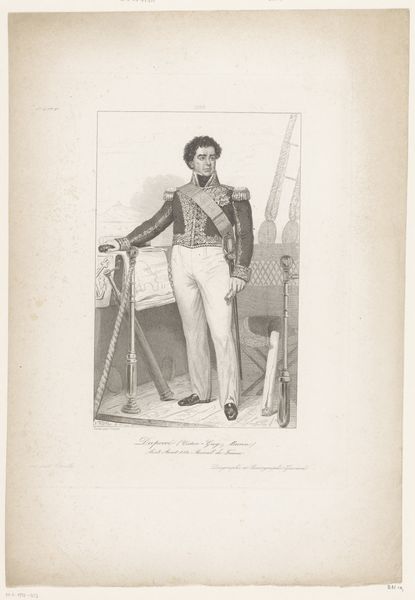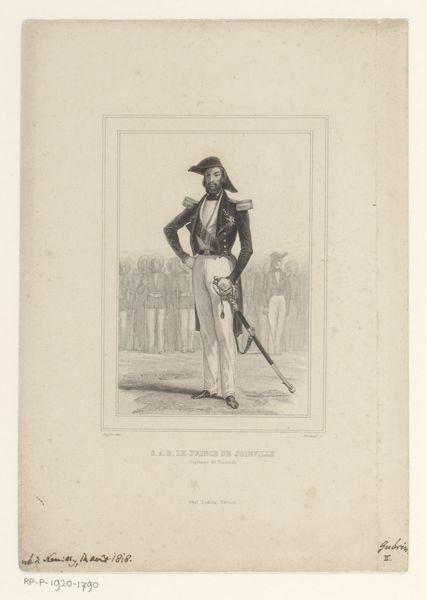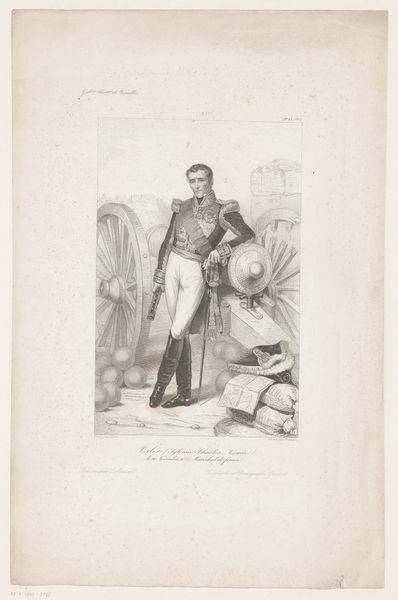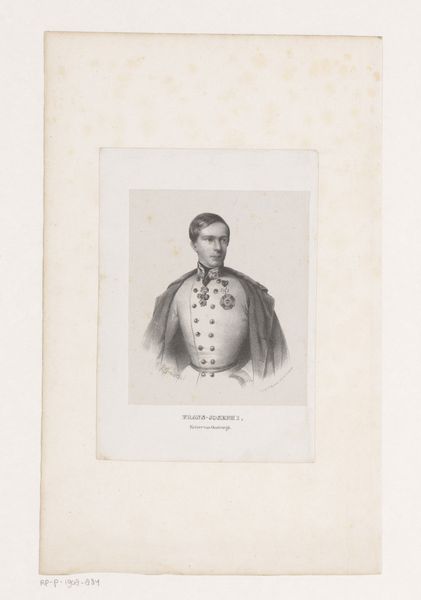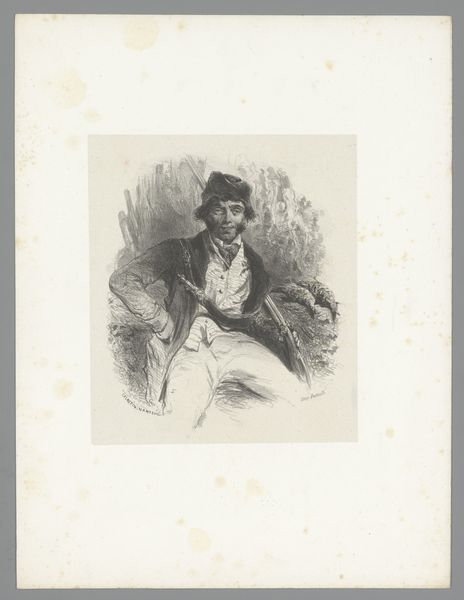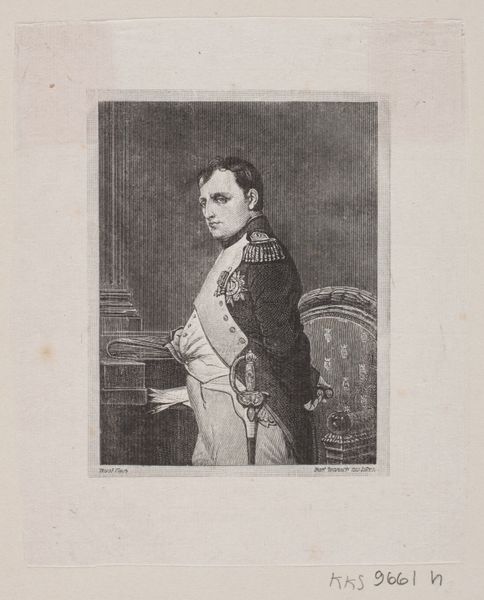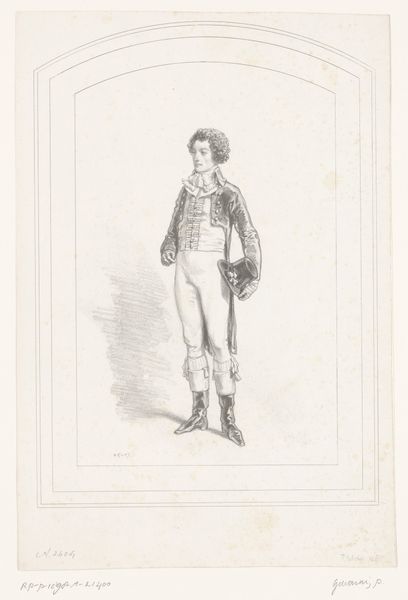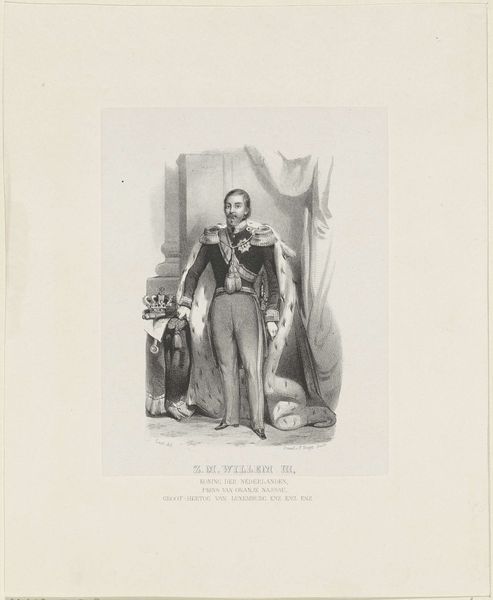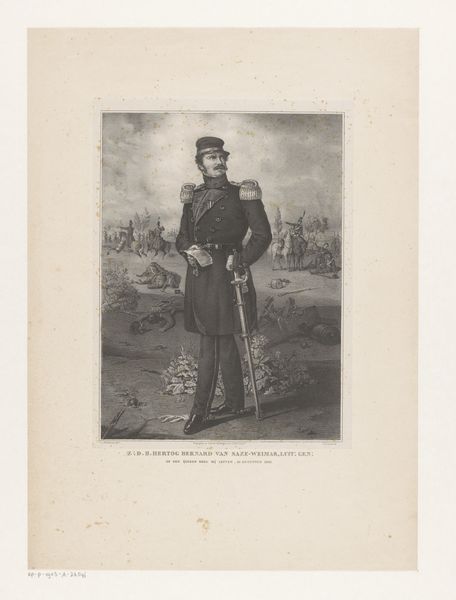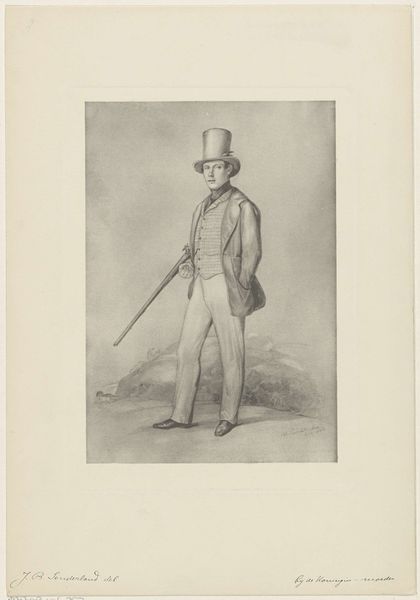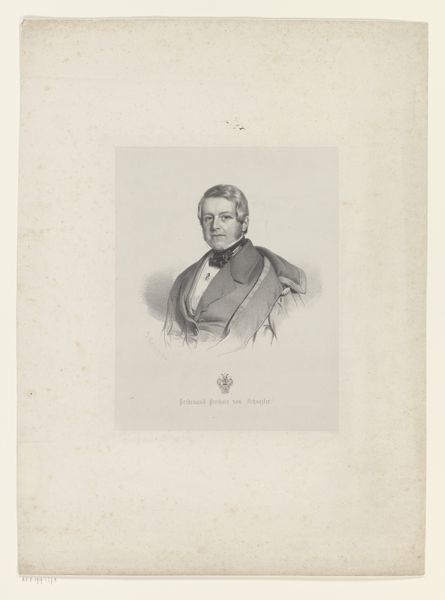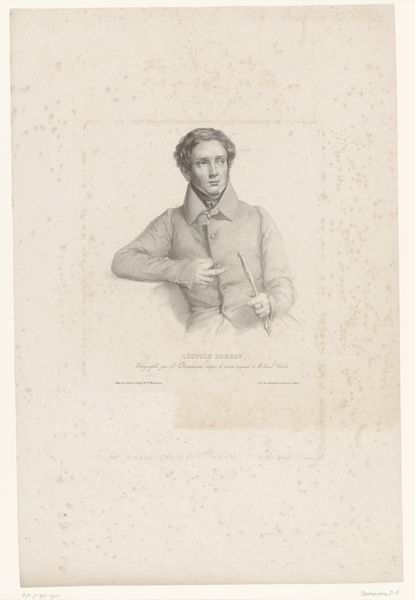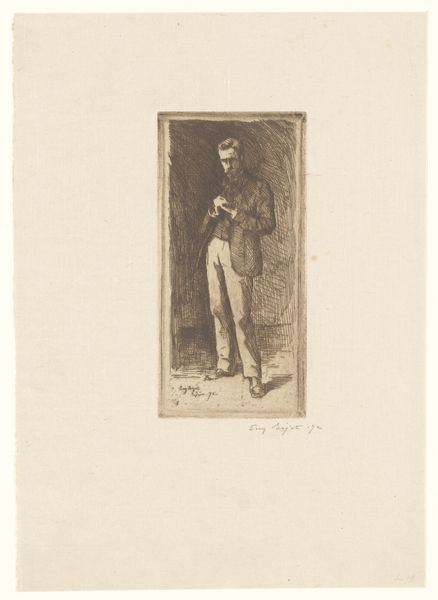
Dimensions: height 246 mm, width 168 mm
Copyright: Rijks Museum: Open Domain
Curator: This is an engraving, entitled "Portret van Guy-Victor Duperré," placing its creation sometime between 1818 and 1918. The profile is Jean Charles Pardinel. Editor: It has an immediate stillness about it, doesn't it? Despite the detailed ornamentation on the subject's uniform, the monochromatic palette and aged paper convey a profound sense of distance. It feels very formal. Curator: Formal it is. We see Duperré, an admiral in the French Navy, portrayed with all the markers of authority—uniform, sword, the suggestion of naval might in the background. It’s a wonderful example of Neoclassical portraiture, aimed at projecting power and stability during a period of considerable upheaval. Editor: Precisely. Consider the symbolism—the controlled pose, the suggestion of a landscape just behind, the rigid lines that defines his posture. There is an inherent tension between the supposed power presented and the very real instability of the world he sought to navigate, literally and figuratively. What does it really mean to project strength when faced with colonial turbulence and internal conflict? Curator: I think that is well-noted. It speaks to the way powerful institutions seek to represent themselves, masking internal contradictions through carefully crafted images. His gaze, just off center, also reveals how strategic placement and self-presentation were key factors to being immortalized in public art, though that's not to diminish the artistry in Pardinel's draftsmanship. Editor: And it highlights the political potency of representation. Images like these help shape perceptions of leadership, constructing narratives of dominance but inevitably also invite critical reevaluation. They certainly compel us to think beyond the surface and investigate the complex power structures at play within the subject’s reality. Curator: A fascinating observation—indeed, that push and pull shapes our experience and hopefully invites a much broader conversation. Editor: Ultimately this speaks to a necessity to always ask critical questions in regard to how such images serve a socio-political and cultural need.
Comments
No comments
Be the first to comment and join the conversation on the ultimate creative platform.
